
| Catalog | Past Items | Order Info | Terms/Conditions | About Us | Inventory Clearance |
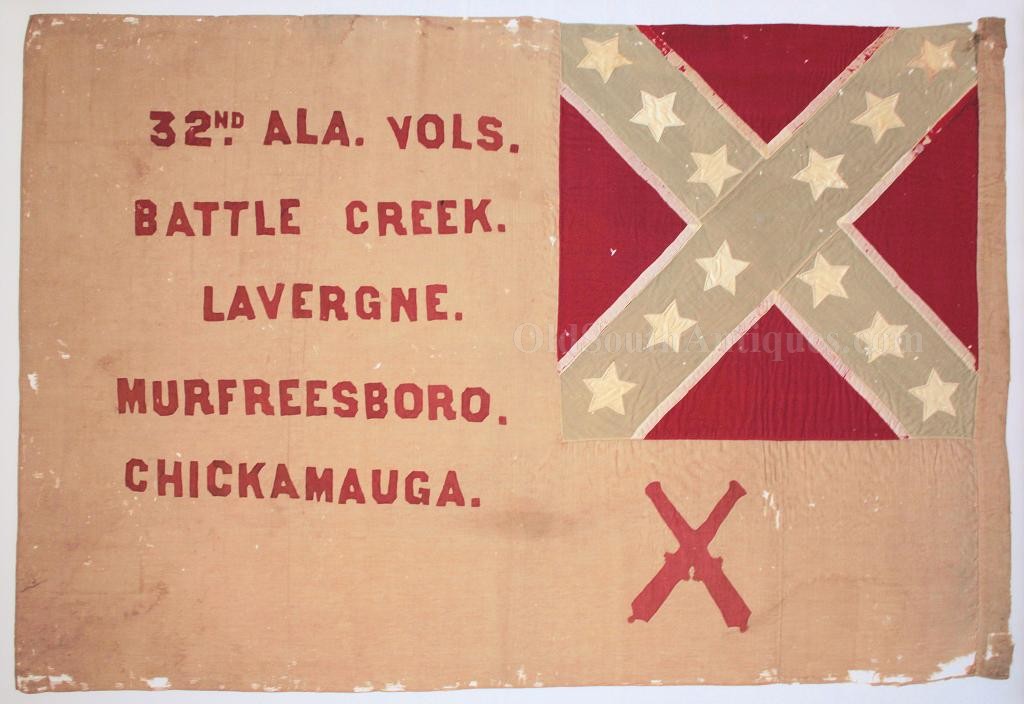
This image looks as though the flag has a red tint, this is not the case, the field is off-white
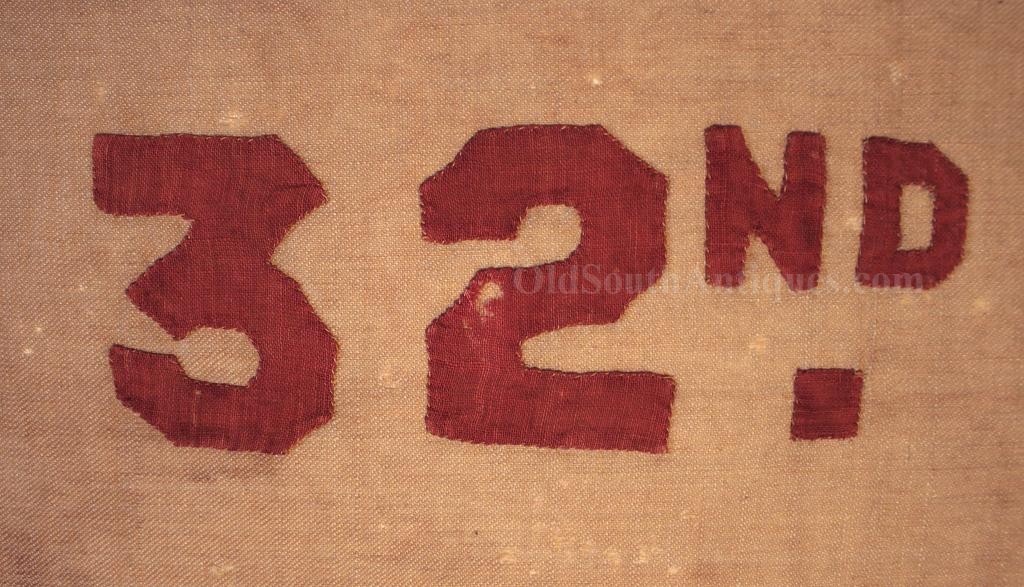

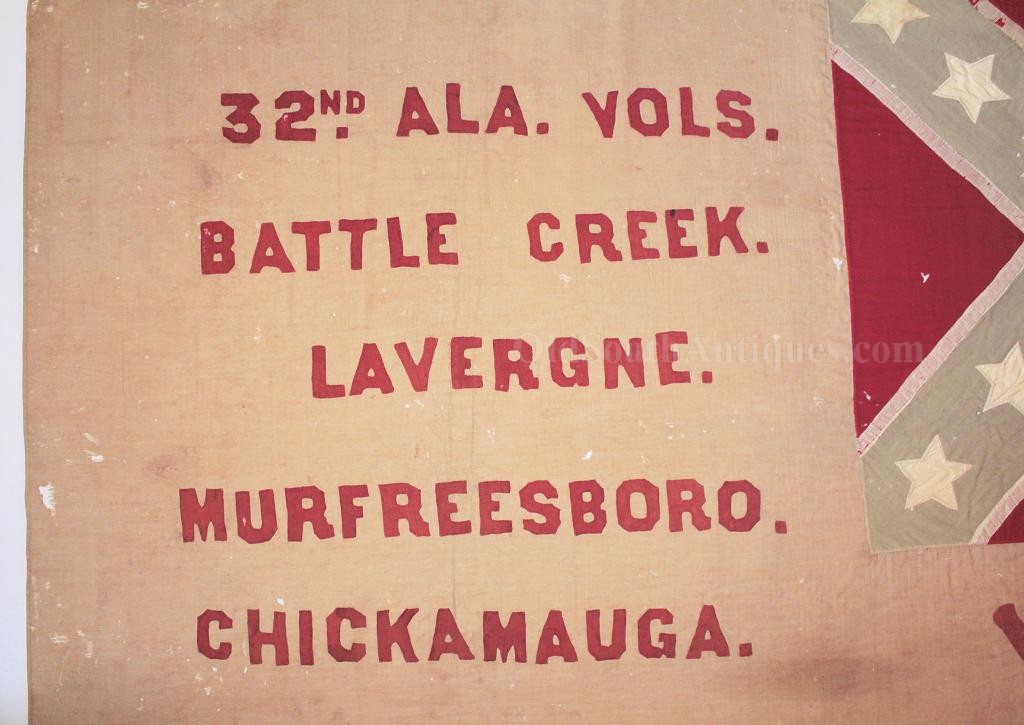
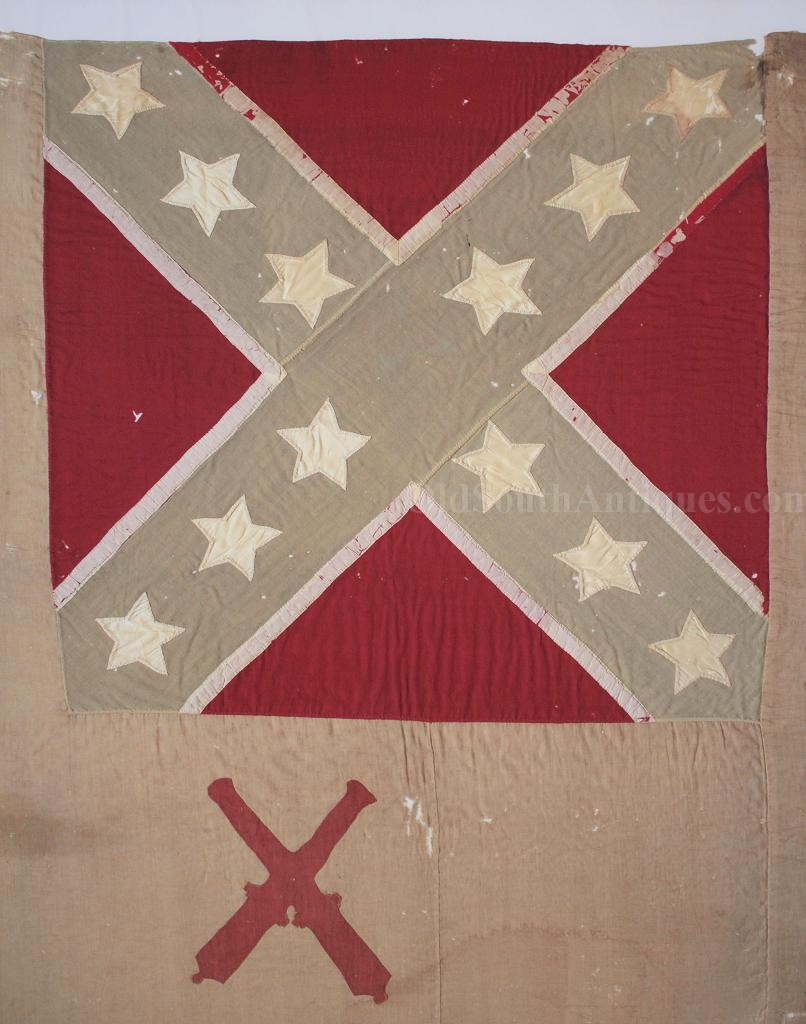
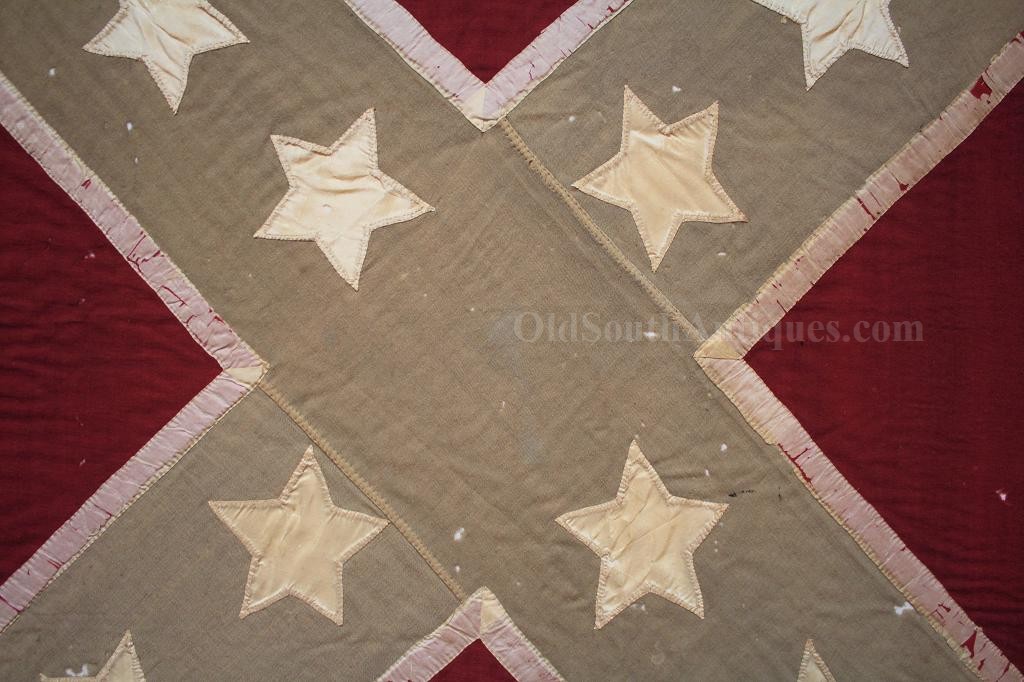
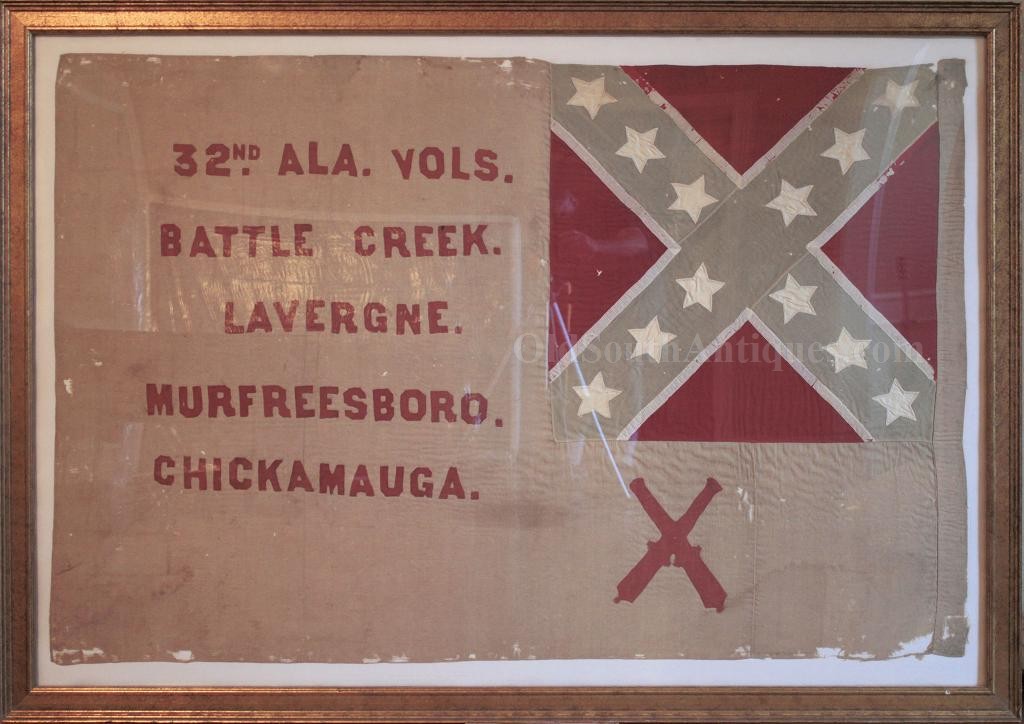
The distortions are reflections.
The flag of the Confederacy rose and fell in only four years. It arose over a prosperous, peaceful nation whose mothers sent their husbands and sons to die, if need be, under its folds. And die they did, from the plains of Manassas to the fields of Pennsylvania, from Shiloh to Nashville, from the Wilderness to Appomattox and from Southern seaports to the shores of distant lands.
The flag the Confederacy adopted as its National Standard on March 4, 1861 was first raised on Capitol Hill in Montgomery, Alabama. The honorable Jefferson Davis, ex-U.S. Secretary of War and new president of the Confederacy, invited Letitia Christian Tyler to raise the first official flag of the new Confederacy. Miss Tyler had been born in the White House, the capitol of the United States. She was the granddaughter of ex-U.S. President John Tyler. The seven star flag Miss Tyler raised that day has come to be known as the First National Confederate flag, or the Stars and Bars. The circle of seven stars in the canton represented the seven Southern States that had seceded up until that time: South Carolina, Mississippi, Alabama, Florida, Georgia, Louisiana, and Texas.
As disunion became a reality and war fever swept the nation in the late winter and spring of 1861, countless towns, communities, and counties formed local military units, or companies, in hopes of participating in the coming conflict. Lincoln’s illegal demand that the Southern States aid in subjugating her sister states had forced another six states to secede. Virginia on April 17th, Arkansas, May 6th, Tennessee, May 7th, North Carolina, May 20th, Missouri, August 5th, and Kentucky on November 5th. A star was added to the Confederate National flag for each new state that joined the Southern Confederacy.
During the Battle of Manassas, it became obvious that the Confederate First National "Stars & Bars” would not do on the battlefield; it was too hard to tell it from the old "Stars and Stripes”. It had intentionally been similar to the flag their forefathers fought under, but a distinct, soldier’s flag was needed and what we now know as the Battle Flag was the result.
After two years of war, there was only hate for the old Stars and Stripes, so by an act of congress, signed into law by the president on May 1, 1863 a new flag was selected. After some last minute alterations, the final design was the "Stainless Banner”. It was part soldier’s flag and part national flag. The canton consisted of the battle flag, and the field a pure white, symbolizing the purity of the Confederate cause and her people.
The Second National Flag was used as a National, and also as a Regimental Battle Flag, by both the Eastern and Western Armies. Much more is known about the CSA military issued flag shown here than the vast majority of Confederate flags. Colonel (General) Randal Gibson ordered new flags for his brigade in November of 1863. He sent a Lieutenant to Mobile, Alabama to acquire the flags from maker Jackson Belknap. Belknap was given some very specific instructions: Each flag was to be specifically detailed for each regiment. The regimental designation was to be applied to the flag, and for the regiments that had fought honorably at a given battle, they were to have the names of those battles emblazoned on their colors. Also, any regiment that had assaulted and took an enemy artillery battery was to have this gallant deed acknowledged by applying crossed cannon to the field. He specifically authorized that the 32nd Alabama flag be emblazoned with inverted cannon in honour of the cannon that they had captured at so much cost during the Battle of Chickamauga.
There can be no doubt that having the record of each regiment waving in the storm of battle for all to see, inspired pride and competition between the regiments. It was a wise decision by Colonel (General) Gibson.
The flag shown here is that of the 32nd Alabama Infantry. Interestingly, a regiment made up in Mobile, so it is fitting that their flag should emanate from there.
The 32nd Alabama Regiment was made up of companies, A, of Washington County, the "Wilson Guards", Capt. Robert L. Bowling, B, of Mobile County, Capt. John Drew, C, of Mobile and Baldwin Counties, and the "John Scott Infantry", Capt. Thomas S. Eaton. Company D, of Wilcox and Clarke Counties, the "Creagh Guards", Capt. John W. Creagh, E, of Clarke County, the "Bigbee Guards", Capt. Alexander Kilpatrick, F, of Choctaw, Mobile and Washington Counties, the "Choctaw Guards", Capt. Hampton S. Smith, Jr. Company G, of Clarke, and Washington Counties, the "Dickinson Guards", Capt. John C. Kimball. Company H, of Clarke County, Capt. John W. Bell, I, of Mobile, Tuscaloosa and Fayette Counties, Capt. Waller Thompson, K, of Mobile County, the "John Scott Guards", (General John Morin Scott of Montgomery, Alabama served under General George Washinton in the 1stAmerican Revolution) Capt. Isaac McCleveland. Note that the names of a number of these companies indicate Scotch/Irish roots.
The 32ndRegiment was organized in April, 1862, and they were first under fire at the Battle of Bridgeport, Alabama on April 29th. Things did not go well for the Confederates at Bridgeport, located on the Memphis to Charleston Rail Road, ergo, no Bridgeport battle honor on the flag.
Three months later they marched into Tennessee and fought at Battle Creek, again on the Memphis and Charleston Road. Here the regiment earned its first battle honor and was authorized to place "Battle Creek” upon its colors.
Continuing into the heart of Tennessee, they captured Stevenson, Tennessee and the important depot stores located there. The regiment was placed under General Nathan Bedford Forrest. Forrest sent the 32nd Alabama to Lavergne, where on October 7, 1862, a larger force under Gen. S. R. Anderson was holding. Even though Lavergne was a failure, Forrest must have been pleased with the service rendered by the 32nd Alabama, to have "Lavergne” placed upon the colors.
The 32nd was then placed in General Wirt Adams' Brigade, under whom they fought the battle of Murfreesboro. The 32nd lost 105 men in the fight at Murfreesboro, paying the highest price yet for another honor on their standard. After wintering at Tullahoma, the 32nd was part of the force sent to Mississippi to the relief of Vicksburg. It was in the trenches at Jackson, where it repulsed an enemy assault without loss, costing 260 Union casualties. In November of 1863, the 32nd rejoined the Army of Tennessee and participated in the Battle of Chickamauga in General Adams’ Brigade, D.H. Hill’s Corp. As mentioned earlier, after the battle the 32nd, was authorized to add another battle honour to their flag: "Chickamauga,” and they had also earned the inverted artillery battle honor, for capturing a battery, but at a terrible cost.
A twenty five year old Horse Soldier (prominent war memorabilia dealer in Gettysburg, PA) catalog has this same flag on its front cover, and inside, it records that the flag surfaced in the north and that it had been captured at the Battle of Missionary Ridge in 1863. I have no reason to doubt the assertion, because the flag has clearly been ripped from its staff, tearing the hoist.
The Bragg led disaster at Missionary Ridge occurred two months after Chickamauga, on November 25th, 1863, when the Confederates were driven from what should have been impregnable works. The 32nd held the Confederate left at Rossville Gap where Hooker’s Corp pushed back the flank when Bragg’s center broke. The 32nd’s flag is believed to have been captured at this time.
This same flag shown in Echoes of Glory, Arms and Equipment of the Confederacy.
The flag measures 41.5” on the hoist and 63.25” on the fly. It has been conserved and archivally framed by Textile Preservation Association, Inc. and is ready to hang in your home, museum or office. It comes with Textile Preservation’s (Fonda Thomsen) authentication.
Confederate flags with battle honours are the Holy Grail of Confederate collectibles.
Copyright © 2025 OldSouthAntiques.com All Rights Reserved.
Privacy Policy | Terms of Use
Powered by Web-Cat Copyright © 1996-2025 GrayCat Systems